How to Get Focus Mode on Sony A6400 From Manual Focus to Continuous Focus
I really can't imagine being a photographer 40 or 50 years ago. The technology of the cameras was so different and you had to switch rolls of film so often. What really would be difficult for me is manually focusing every shot. I have to manually focus when I do video, and it can really be a struggle. I'm sure it's one of those things you get better at with practice, but I still prefer autofocus.
Over the years, autofocus has gotten better and better. Recently, Sony has made some big leaps in the autofocus world with the Sony A9 and now the Sony A7iii. I haven't used the A9, but I did recently get the A7iii, and it's pretty amazing.
Understanding Sony's Autofocus Settings
The Sony A7iii was sold out everywhere when it launched, so it's clear that a bunch of people are jumping ship and switching over to the Sony world. Sony has several autofocus settings to choose from, so it can be kind of confusing on what each does and when to use each mode. Hopefully, by the end of this you'll have a better understanding of Sony's Autofocus Settings.
Sony A7 III on Amazon
A Quick Warning
Before we get into all the Sony autofocus settings, I want to warn you that there some things that can cause problems. The first thing to consider is your Sony camera. Not all cameras are created equal. Some cameras will be missing some of these features and modes and some just work better than others. The Sony A7iii is much better than the Sony A7Sii along with the majority of other Sony cameras. Second, not all lenses are created equal. I now own the Sony 50mm 1.8, Rokinon 50mm 1.4, and Zeiss 85mm. The Sony is pretty horrible with focusing, the Rokinon is good, and the Zeiss is the best. So don't think you can use a really cheap lens and get the best results.
Sony 50mm 1.8 (on Amazon) (on KEH Camera)
Rokinon 50mm 1.4 (on Amazon) (on KEH Camera)
Zeiss 85mm (on Amazon) (on KEH Camera)
On KEH Camera, you can find lighly used camera equipment at excellent prices! They also have really good financing options for the expensive stuff!
Sony Focus Modes
The first choice to make is how the camera is going to focus. This option can be a little hard to find. Depending on your camera, it might be under the Camera and 3rd page or in the Sony A7iii, it's now under the first Camera and 5th page. To make things easier if you plan on switching this often, you'll want to assign this to either one of your custom buttons or put it in one of the 12 Function slots. Once you get there, you'll notice you have 4 options to choose from.
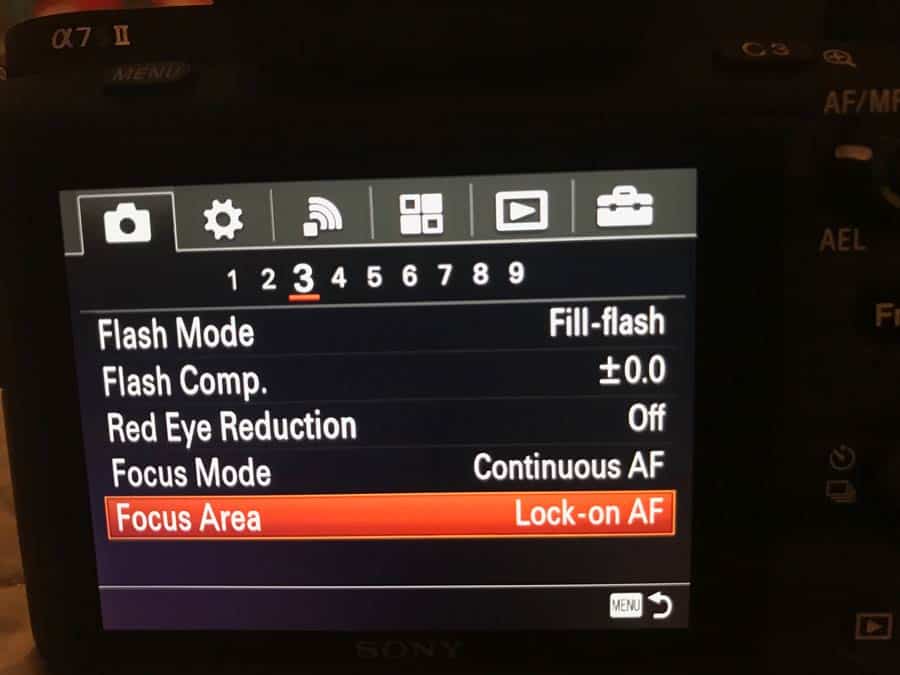
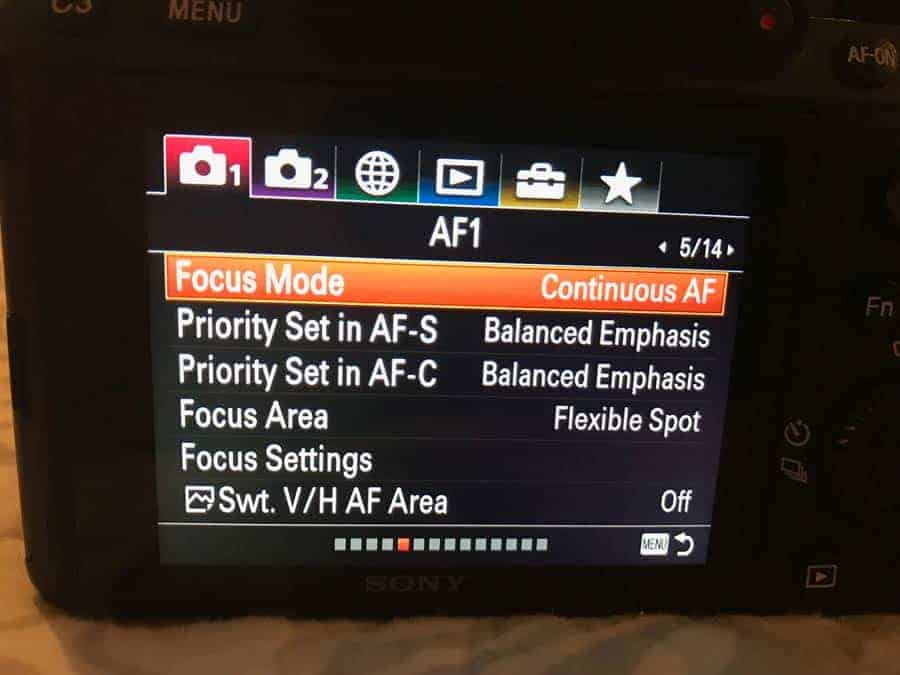
Manual Focus
Yes, I know we are talking about how amazing Sony's autofocus is, but I still thought I'd point out that there is a manual focus mode. One thing that I have noticed is that with the lenses I've been using you can't manually focus while the camera is set in most of the other modes. This means if the autofocus is acting up, you can't quickly fix it by manually focusing. You'd have to go in and change the focus mode.
I don't plan on using manual focus for photography, but Sony does have a really cool feature related to manual focus. When you start to turn the focus, the focus assist automatically kicks in, making the image zoom in so you can make sure you are in focus. This might get annoying because it would affect your composition because you can't see the full frame, but I thought it would still be helpful.
Direct Manual Focus (DMF)
Direct Manual Focus is an interesting focus mode. Basically, it's an autofocus mode, but it does allow you to manually focus after the autofocus has locked in. I could see this being useful for product photography or landscapes, but if you have that kind of time to adjust things, you could always just do it all manually from the beginning.
So this mode kind of solves the issue I mentioned earlier about the camera not allowing you to manually focus while in another mode. Still, you have to have the autofocus lock in first before you manually focus. I think it'd make more sense to let you manually focus at any point instead of having to wait.
AF-S (Single-Shot)
Single-shot mode is exactly what it sounds like, a single shot. Once your camera has locked down its focus, it will not change until you reactivate the focus again. This mode is helpful in situations where you know you don't want the focus to change. For example, maybe something is moving in front of your subject, like people or blowing leaves or confetti, and you don't want the camera to switch focus to these things.
The problem with Single-shot mode is that often things move, like the camera or the subject. If you or your subject moves a few inches forward or backward after the focus is locked, your focus might be off. This is a real issue with subjects moving straight at you. By the time you've gotten focus, the subject has already moved, so now the focus is off. That's why most people prefer AF-C (Continuous AF).
AF-C (Continuous AF)
Continuous AF is what most people will use because it tries to keep things in focus continuously. After locking in the focus, if you continue to activate the autofocus, the camera will keep trying to focus. This means that if the subject does move a little or you do, the camera should adjust. I find this very helpful because I deal with a lot of movement in the wedding world, and it's also great for sports or kids photos or anything that's constantly moving.

Unfortunately, Continuous AF isn't great all the time. Sometimes Continuous AF will jump off the subject because it is constantly trying to stay focused. If you find this happening, you could use the Focus Hold button once you are in focus (mine is set to the AEL button). This way it won't change focus until you release the Focus Hold button . Initially, I was using the A7Sii, and it had some issues with Continuous AF. It didn't lock on very well and couldn't keep up with the subject. The Sony 50mm F1.8 was the worst. It never locked focus. It just jumped back and forth and sounded like a dying giraffe. When I switched to the Sony A7iii and the Zeiss 85mm, though, Continuous AF was amazing. With all that said, make sure you test out the Sony body and lenses in Continuous AF before you go out and try to use it in a real shoot.
Sony Autofocus Areas
We're done with the Focus Modes, so I now we move on how to select focus. There are several different choices, and there isn't a perfect answer for everyone. One thing I need to mention is that not all autofocus areas work in Single-shot mode. Some only work in Continuous AF, so be aware that if you choose Single-shot, you might not be able to do everything.
Wide

If you're looking for the simplest autofocus area and you don't want to deal with controlling the focus point, Wide mode is for you. It's basically automatic. In Wide mode, the whole screen is active, so the subject can be anywhere. The camera determines focus by picking the object that is either closest to the camera, in the center of the frame, or a face if there is one present.
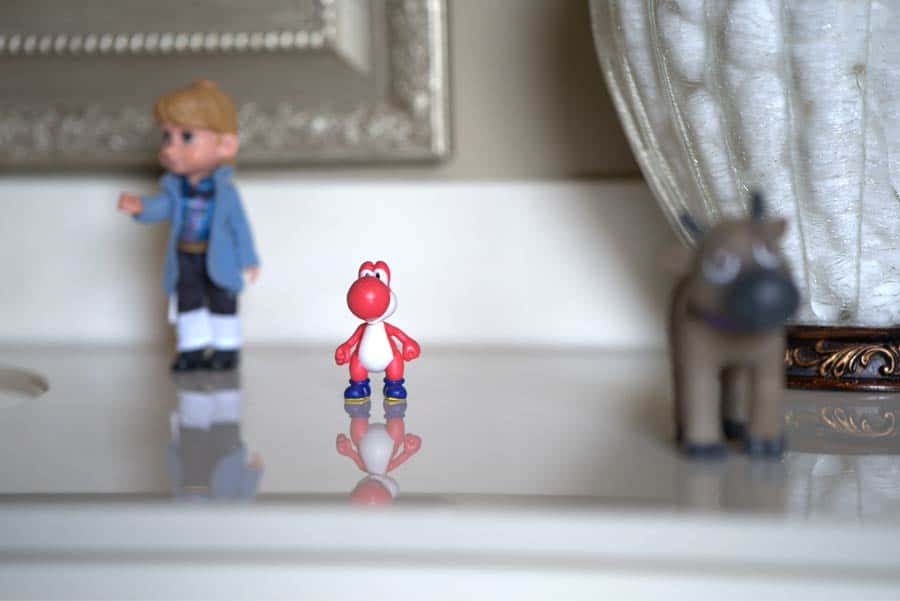
The wide mode can be useful in several situations. As I said earlier, if you don't want to mess around with controlling the focus point or you just aren't quick enough at selecting a focus point, wide can be helpful. All you have to do is activate the focus and the camera does the rest. This would also work well in situations where your subject is by itself like portraits of one person or product photography. The camera should be able to easily find it.
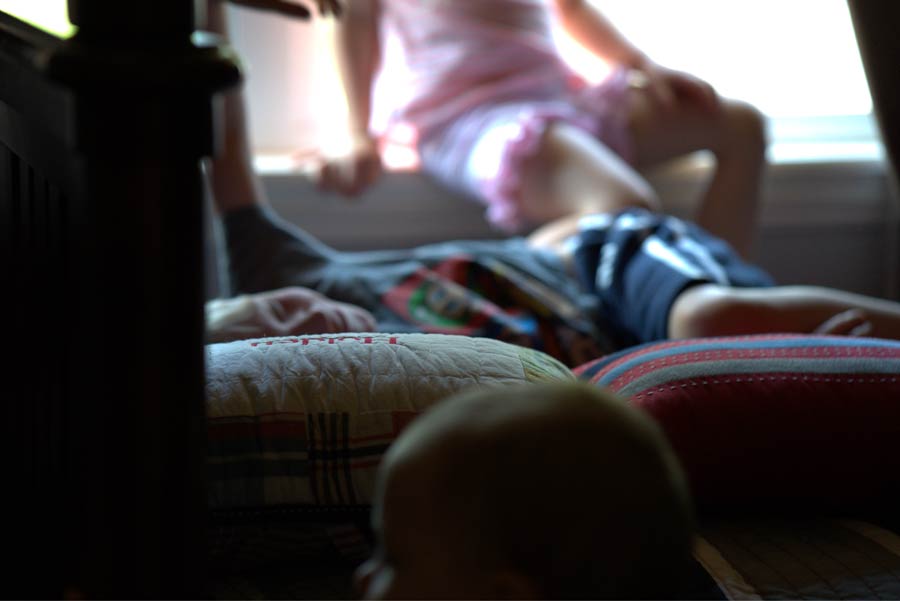
The real issue with the wide autofocus mode comes when you have multiple subjects or objects in the frame. The camera will have a difficult time determining the correct subject or it will just pick the one closest to the camera. Imagine you have a group of people talking. The person closest to you might be looking the other way while the person looking at you might be on the other side. In Wide, it might pick the back of the person because it is closest. Sony cameras do have face detection, so it will probably lock onto the correct person. In other situations though, like if you have multiple people, Wide AF might not work because it might select the wrong face and you have no way of controlling it.
When I was using it, it leaned heavily toward the center of the frame. There were times where I had to move the subject into the center to get it to focus. Other times it did find a face and worked well. Overall, I think this mode is good for beginners. It makes things simpler, and if you pair it with Eye AF, which we'll talk about soon, you'll get what you want about 80% of the time.
Zone

After you've used Wide AF for a while, you'll probably be ready to move to an area with more control. The next step from Wide AF is the Zone autofocus area. In this area, you can now select a large chunk of the frame to focus on, but the camera will still help select focus in that area. There are 9 different areas or zones, so you can have more control over where to focus.
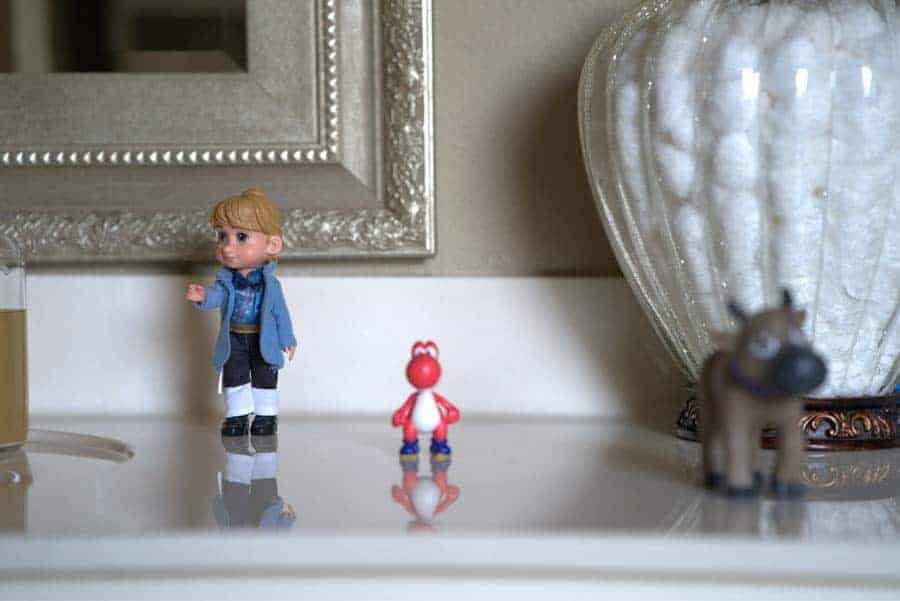
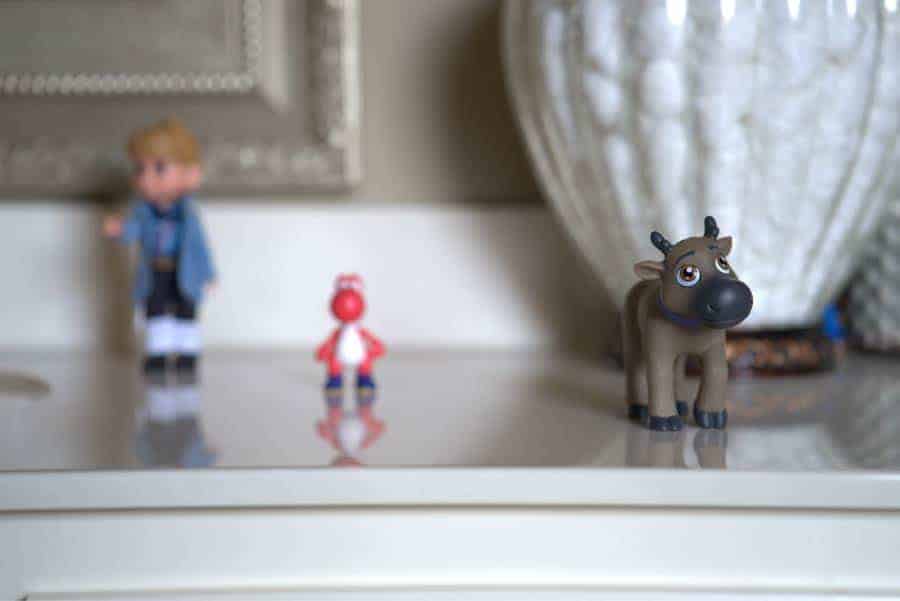
Zone AF works well in those situations where you have a busy scene or maybe you want to use something in the foreground in your composition. Wide AF might lock onto the wrong thing, but with Zone AF, you can pick the area.
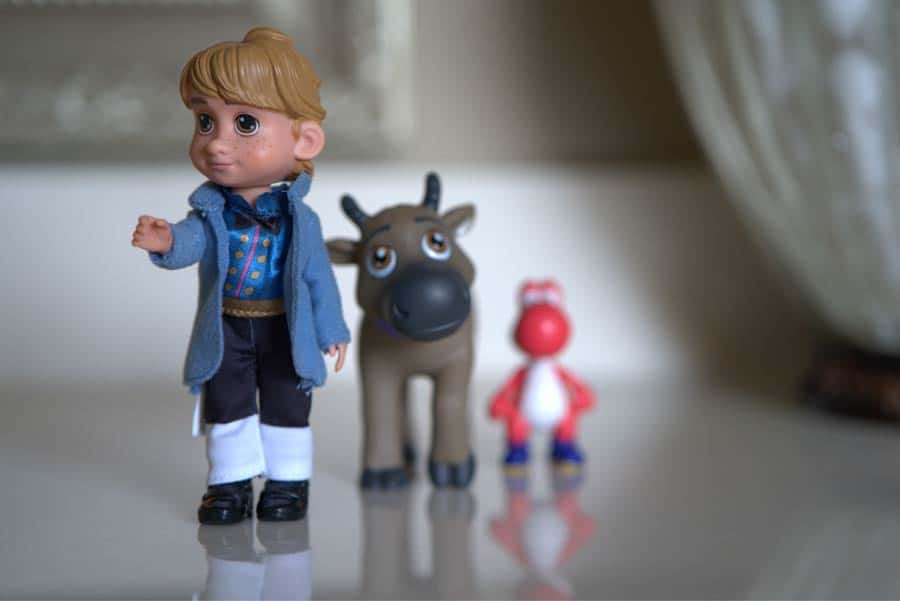
The good and the bad is that Zone covers a large area. It's good because you don't have to move the spot around a lot, but it's bad in that you still don't have complete control. Within that big area, you still might have more than one thing. Then you're once again left hoping the camera makes the right choice. From my experience, the Zone area is better than Wide when dealing with lots of things in the frame, but there are still times where you focus on the wrong thing.
Center

The Center Focus Area leaves the focus point in the middle of the frame, and that's about it. You just have to put your subject matter in the center, and you will get it in focus.
I really don't see this being a very useful setting. Wide is similar but also gives the flexibility to find faces and other things. You can also do the same thing with the following modes if you just put focus point in the center, and then you'd still have the option to move it if needed.
Flexible Spot
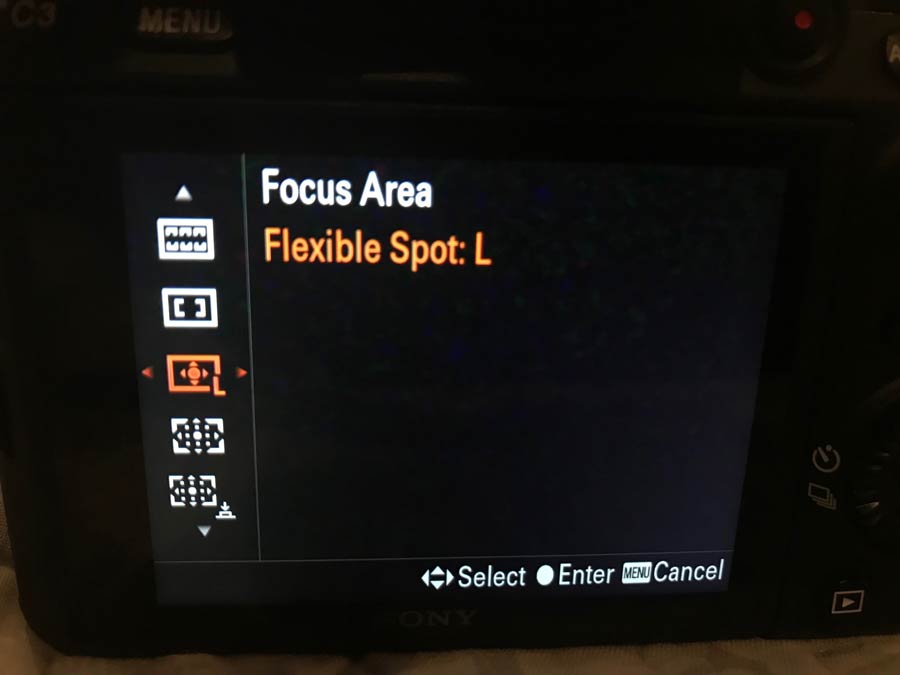
The Flexible Spot area is similar to what I've been using for years with Nikon. Basically, you have a dot or square that you move around the screen and put on your focus point. One interesting thing with Sony, though, is they let you control the size of the point. When selecting it, you can hit left or right to choose between three sizes. As far as I know, you can't do that with other cameras.
If you're a control freak, this is the area for you. With Flexible Spot, you control exactly where the focus goes. To some, this may seem silly, but it matters to me. When I'm focusing, I want to focus on the eye closest to me, not the one further away. I can control that with Flexible Spot.
The main downfall of Flexible Spot is getting it to work. You have to use some kind of controller to move the spot around, which is awkward on some cameras. The Sony A7iii now has a joystick but my Sony A7Sii doesn't. To move the focus point around, I had to push a button to activate it and then move it around. It made things difficult. Moving the spot around also takes time, so there have been times I missed a shot because I couldn't get the focus point there quickly enough.
This is what I used at a wedding last week during the reception??? And I was amazed at how quickly I got focus and how accurate it was. Usually, I miss several photos with my Nikon because of the low light and all the movement, but I felt like the Sony was hitting every shot.
Expand Flexible Spot
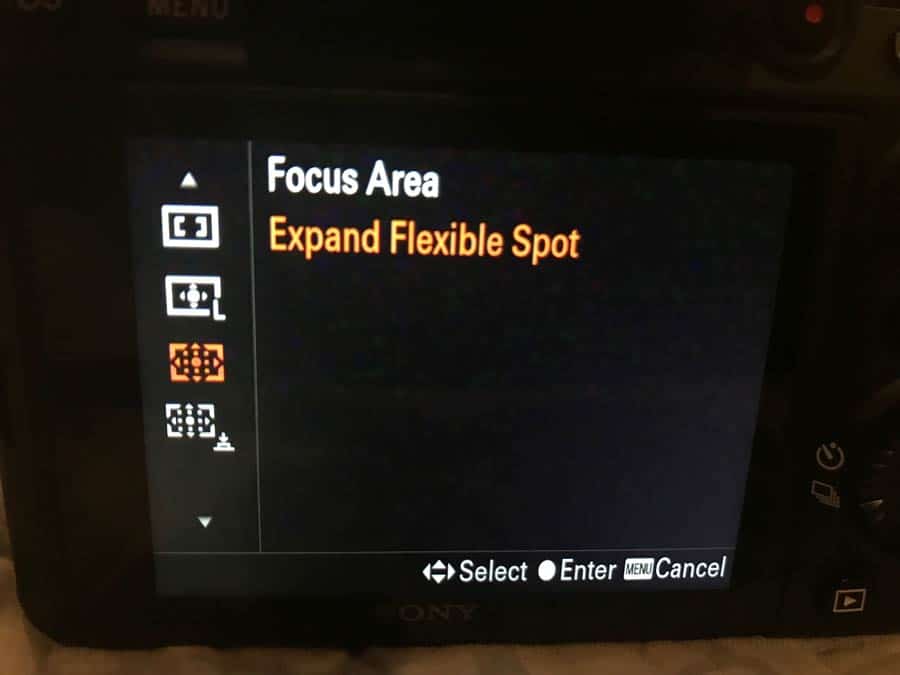
Expand Flexible Spot takes Flexible Spot M, but it allows the camera to try to help. When you've got your focus point on your subject, the Expand Flexible Spot will "expand" if needed outside of the focus point to grab focus.
Out of the two, I've found this focus area to work well on my Sony A7iii. I don't normally trust a camera to help out or make decisions, but I found that when I select the general focus point, the camera does help me out.
Lock-On AF Expand Flexible Spot
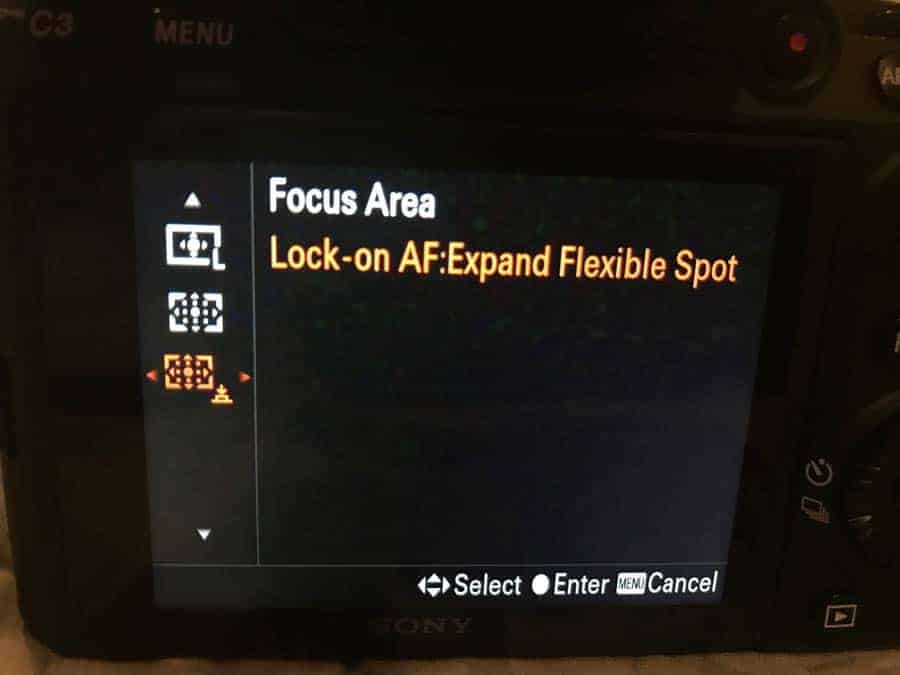
To take things even further, we have the Lock-On AF Expand Flexible Spot. This focus area takes Expand flexible spot, but then it will lock-on and follow the subject once you have started focusing.

This focus area is pretty amazing. You still have to start with the focus point on your subject, but once it's locked-on, the subject can move or you can move, and the camera just keeps going. There are a few times where it loses the subject, like if it goes out of frame or behind something, but overall, this is my favorite focus area of them all.
I decided to test it out to see how well it worked. I had two of my kids sprint at me. I locked on to my son and fired off about 8 or 9 frames. I never took my finger off the focus or changed anything. I just held it down. Basically, every frame was in focus, and I was shooting at f4.5, so it didn't have crazy depth of field.
Center Lock-On
Center Lock On is more of a special feature than a focus area. It's been around for some time because I have it on the Sony A7Sii as well. It does what Lock-On AF Expand Flexible Spot does but in a different way.
The first big difference is you have to activate this every time. You have to turn it on, put the subject in the center of the frame, and then select it. This makes it more involved than Lock-On AF Expand Flexible Spot.
The other big difference is the way it works. Once you choose the subject, you don't have to hold down the focus button. The camera just keeps following that subject.
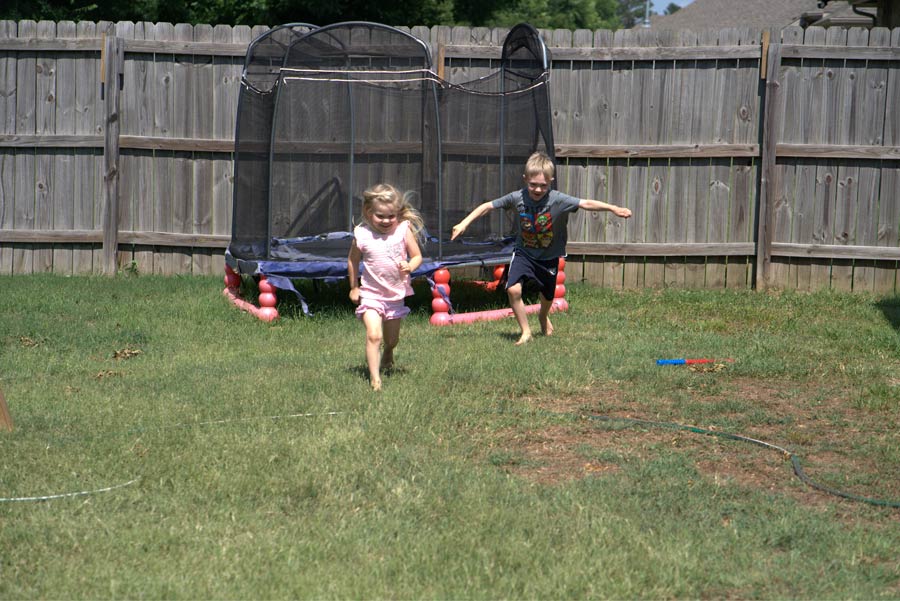
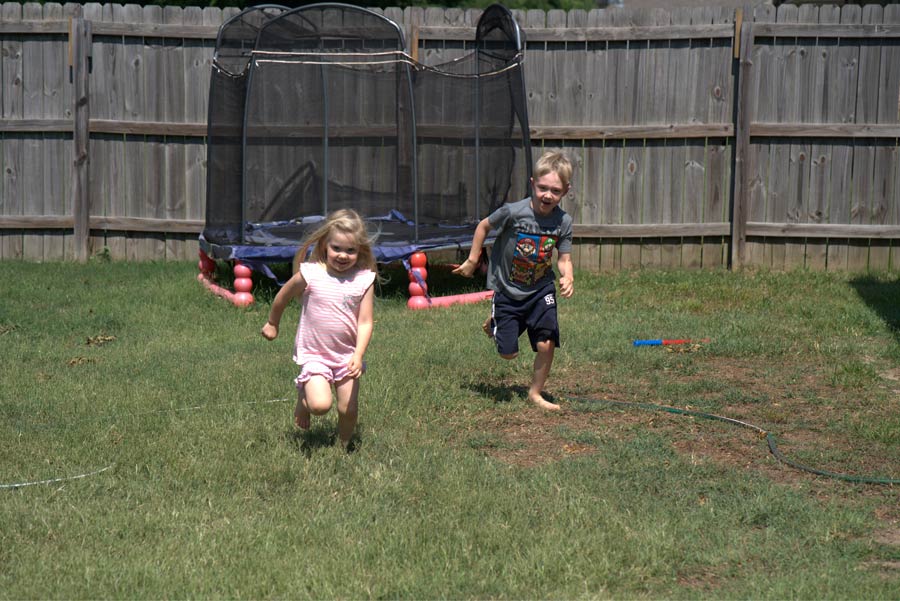
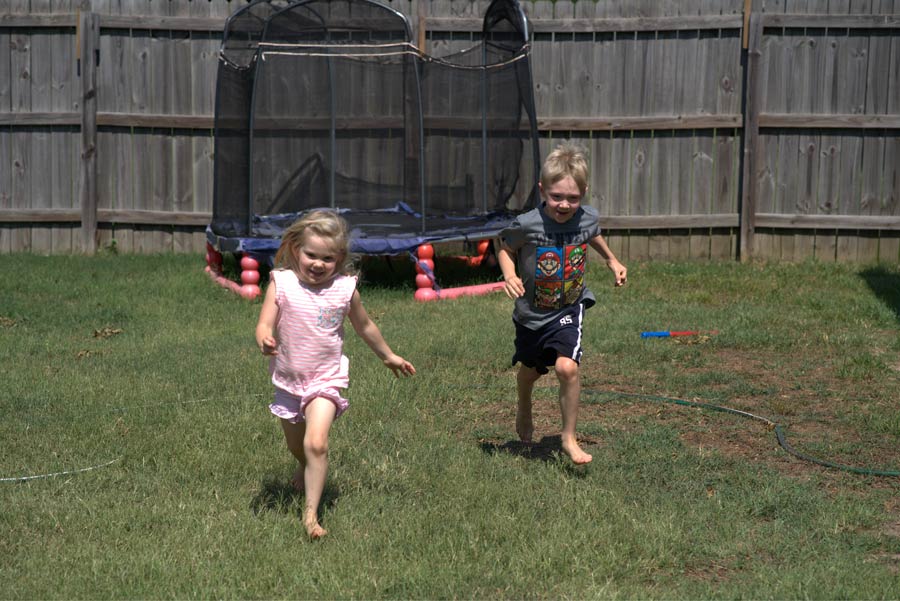

I tested this out with the running test, and my results were the same. This is an extremely nice feature, but because there is all the button pushing to get it to start, I'd still stick with the Lock-On AF Expand Flexible Spot.
Eye AF
This is it! This is the feature that is changing the photography world and getting people to jump over to Sony. Eye AF goes even further into autofocus and face detection and will automatically find a subject's eye, focus on it, and follow it!


When I'm shooting Nikon, I shoot in a spot area, so as I go, I manually move the focus point around and put it on people's eyes. I've gotten quick with my ability to move that spot around, but still, there are times where I'm just not fast enough, and I miss the shot. Eye AF gets rid of all of that and does the work for me. By simply pushing the center select button (or whatever you've programmed it to), the camera will search for an eye and focus on it. That's so much faster and easier the rapidly clicking and moving a spot around the screen.

Every time I see a gadget in an ad or on an infomercial, my first thought is, does it work. All of this looks really neat and fun, but will the knife really cut through a shoe? Will that stuff really fix a hole in a boat? The same goes for Eye AF. It sounds amazing, but does it actually work?
Let me start off by saying that I haven't put the Eye AF to as much of the test as I wanted. I've used it around the house with my kids and some during a wedding, but I am by no means an expert on that. I plan on writing a longer review on the Sony A7iii in the future, and by then, I'll be able to give you a more detailed answer. For now, I will say that I'm pretty impressed. It finds eyes quickly and will follow them. It even stayed locked on the eye area after the subject closed his eyes. Now, is it perfect? No, there were sometimes it focused on the eyelashes or a piece of hair, and it did struggle with quicker moving subjects, but overall, I'm impressed and plan on using Eye AF as much as I can.
Conclusion
That's it for Sony's focus system. If you own a Sony camera, I hope this has demystified some of it for you and now you have a better idea of what everything does and when to use it. I know I started off really confused about all the different things I could do with Sony's Autofocus system, but now I'm loving my Sony camera and its amazing autofocus!
Disclaimer: Improve Photography is a participant in the Amazon Services LLC Associates Program among other affiliate programs, an affiliate advertising program designed to provide a means for sites to earn advertising fees by advertising and linking to Amazon.com and other websites.
Source: https://improvephotography.com/53377/understanding-sony-focus-modes-and-which-to-use/